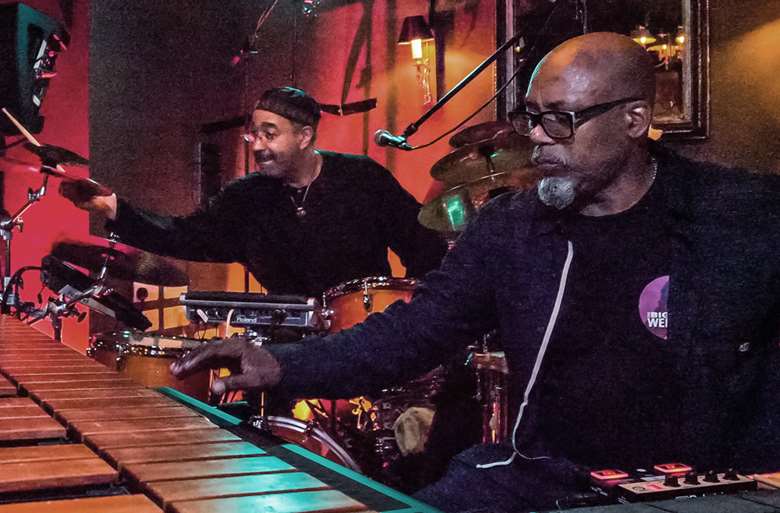Marque Gilmore Delivers Masterclass In Beat Science At CLF Art Lounge
Kevin Le Gendre
Tuesday, October 1, 2019
Despatches from Peckham's newest jam session

Jam sessions that are off the beaten track are always welcome. This excellent new venture in Peckham, south London got off to an auspicious start with a three-night stint, running from Friday to Sunday, headed by the pioneering drummer-producer Marque Gilmore. Among the first to play ‘jungle live, the American became a pivotal part of the British and European scenes in the 1990s and millennium, collaborating with anybody from Nitin Sawhney to Erik Truffaz and Cleveland Watkiss and DJ LeRouge in Project 23. Now resident in Sweden, Gilmore has been spending more time in the UK of late (he was part of the Swedish Alloy series at the Vortex earlier this year) and this residency sees him joined by some notable guests, tenor saxophonist Steve Williamson, vocalist Ishani and multi-instrumentalist-producer Orphy Robinson.
The first set of the MG-OR duo is a reminder of the great orchestral possibilities of no more than two musicians in the era of audio software. Both Gilmore and Robinson avail themselves of acoustic axes and state-of-the-art kit, such as electric percussion, samplers and sequencing programmes on a laptop, as they fashion a series of 21st century soundscapes that betray a commitment to technology that fully complements the virtuosity of each. Gilmore’s diasporic leanings take him seamlessly from West African rhythms to reggae to swing, and the sharp, stinging resonance of his snare and ride cymbal are a potent reminder as to why he became an exemplar of drum'n'bass in real time over two decades ago. The polyrhythmic platform he sets up for Robinson is rich and dense, eliciting a range of responses that is equally inventive, none more so than a distorted cajon groove that pushes the music into a bulbous low register that recalls the most outré of studio nerds intent on finding new nuance in subsonics. The danceable slant of the dialogue increases further when Gilmore triggers a break right at the other end of the spectrum, which has a high enough pitch to be a spring-loaded sabar from Bamako, against which Robinson adds sensual vibraphone chords from dubwise Brixton. The cultural shapeshifting continues with a shot of Brooklyn funk, as Gilmore starts to busily work his kick with the kind of heavy syncopation that makes it a bassline in its own right, before processing, slicing and dicing beats and throwing them back to his fellow navigator. It’s on-the-fly production, an advanced science taking a cue from a long line of innovators that would include both the Perrys and Tubbys down JA way and the Worrells, Craigs and Chandlers up in the US.
Though this is a seated venue, the music has a sufficiently physical character to set off a round of vigorous head-nodding that underlines how both musicians have upheld the fundamental tradition of release in black music all the while pushing the envelope in the digital age. The night before in Dalston there was an excellent set by the British-Senegalese-Gambian group Fofoulah as part of the London African Music festival, and these two gigs seem connected even though they were in different contexts. The common denominator is the drum as a specific sound source, and drumming as a guiding principle that can be applied to any instrument, be it one that's wired-up or wireless. When Gilmore scats rhythms he becomes the talking drum.